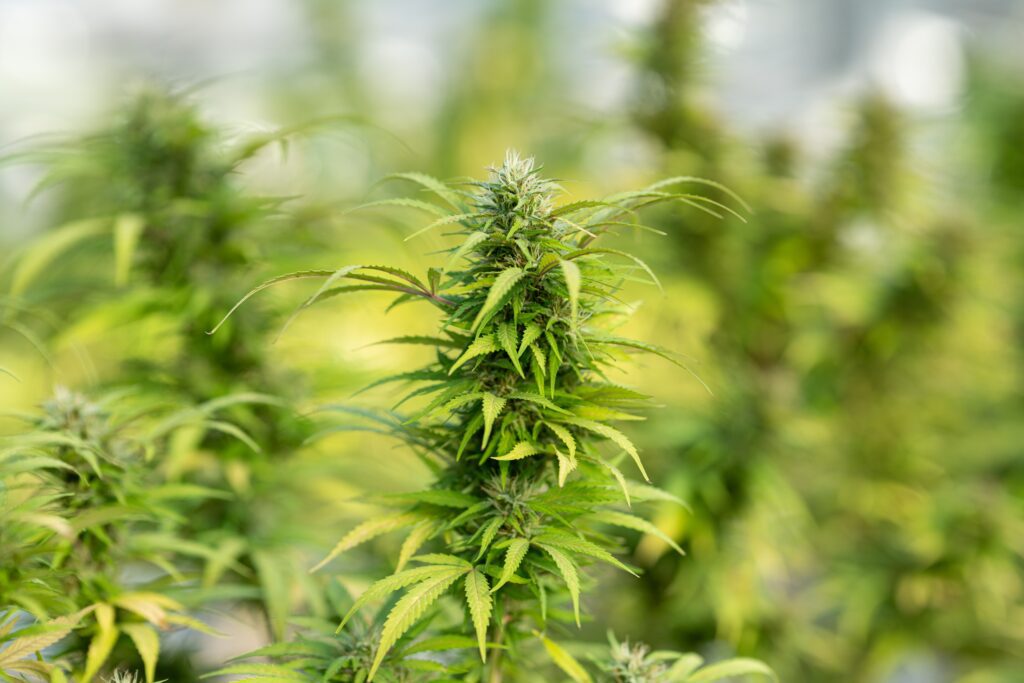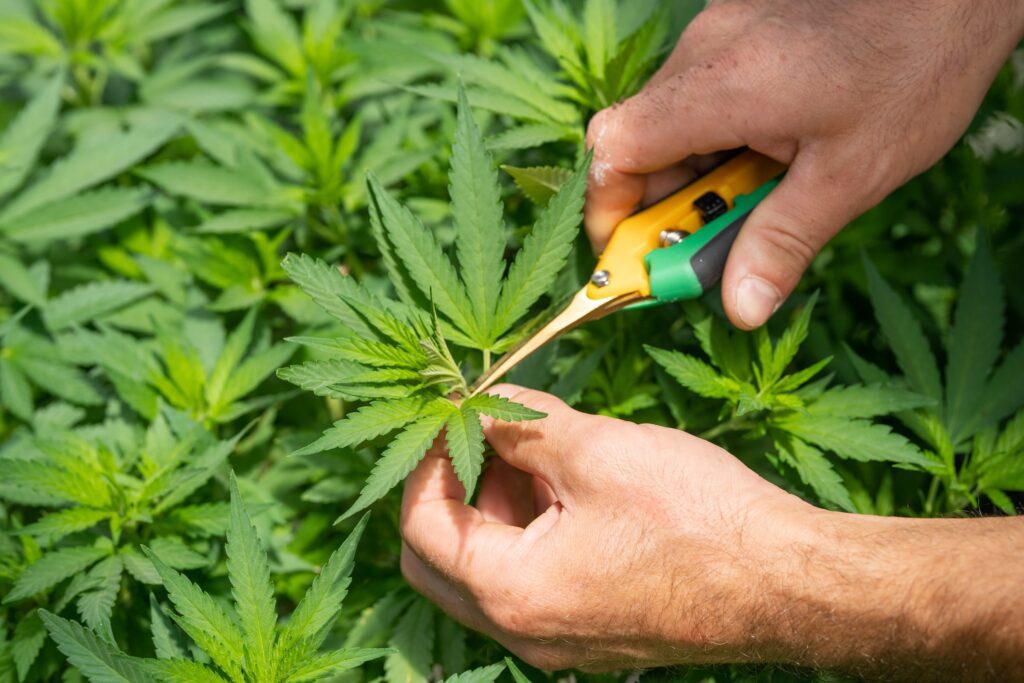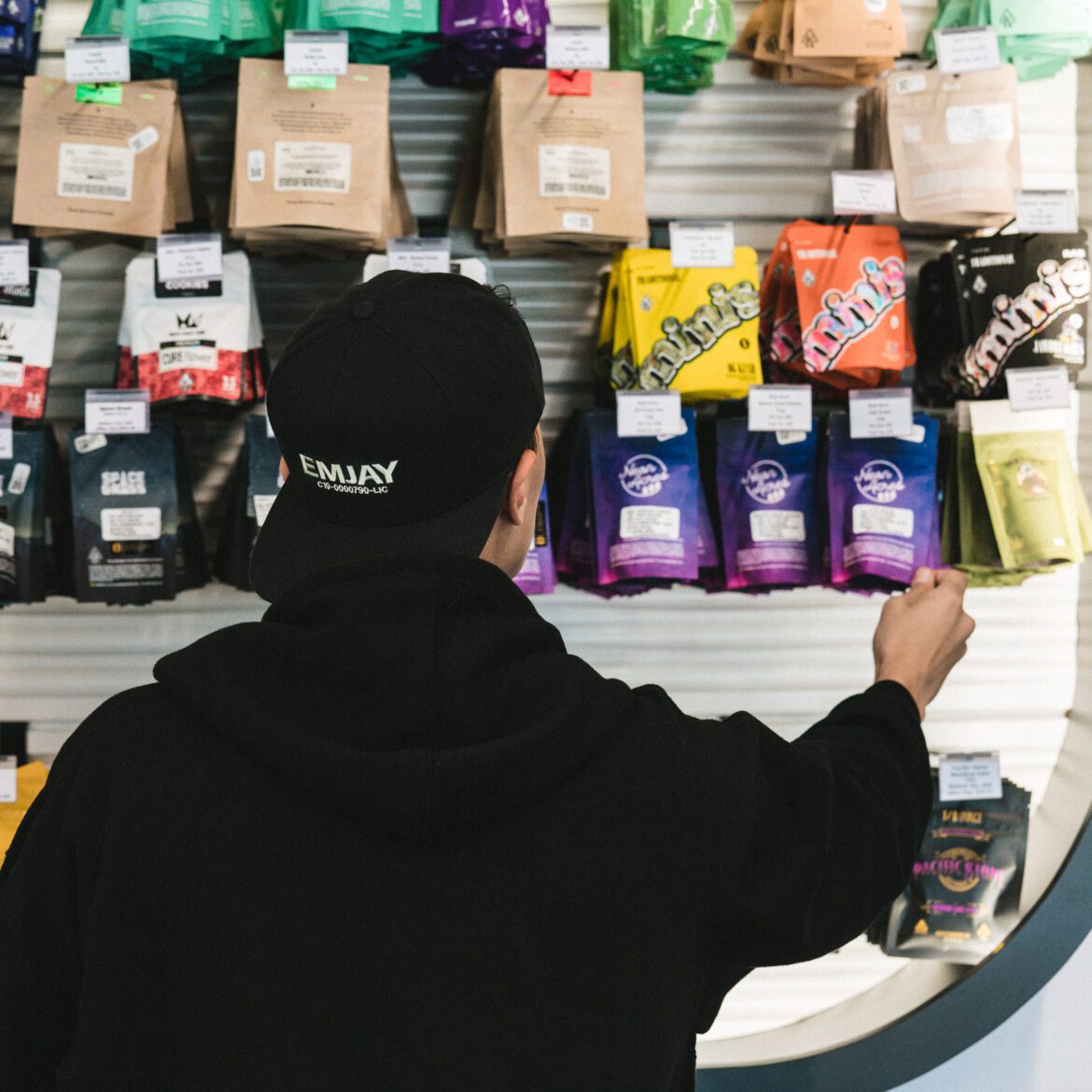We hate to be the bearer of bad news, but the THC percentage on cannabis packaging isn’t exactly what it’s being marketed as. For a lot us, we’ve learned that a higher THC percentage = a more intense high, but that just isn’t the case. There’s more that goes into how a strain affects you than just THC percentage.
*Note: THC percentage does affect edibles. A 100 mg edible is A LOT stronger than a 10 mg edible.*
The University of Colorado published a study on THC percentage that found, “Potency did not track with intoxication levels…while we saw striking differences in blood levels between the two groups, they were similarly impaired.” In simpler terms, they had a group of people using a higher THC percentage cannabis and another group using a lower percentage. Even though the high THC group had more THC in their blood, they felt relativity the same.
What are cannabinoids?
Cannabinoids are naturally occurring compounds in the cannabis plant. While delta-9-tetrahydrocannabinol (THC) and cannabidiol (CBD) are the two main ones, research has found that cannabis can produce over 100 cannabinoids, most of which haven’t even been tested. This means we have a lot to research in order to fully grasp what makes certain strains of cannabis so powerful.

What are endocannabinoids?
Endocannabinoids, neurotransmitters (aka chemical messengers), help communicate with nerve cells in the body. Endocannabinoids attach themselves to little cannabinoid receptors, which kick-start the endocannabinoid system. The two most common cannabinoid receptors they bind to are vital to how the body reacts to cannabis:
CB1 lives in the central nervous system (spinal cord and brain.)
CB2 lives in the peripheral nervous system (immune cells.)
THC in cannabis
Here’s the thing: we currently know almost nothing about most of the ingredients in cannabinoids and how they interact with the endocannabinoid system. Even the THC percentage strength of the same strain can vary by 10-20% depending on where on the plant the bud was harvested.
THC percentage varies even within the same plant. The highest percentage is usually at the top, and the percentage lowers as you harvest closer to the ground. So, how can a cannabis strain be marketed as 30% THC when roughly only ¼ of that plant matches that claim? It’s because the only reason we measure the potency of cannabis with THC percentage is that there isn’t a better metric yet. That in itself should alert you to the fact that maybe THC percentage isn’t all it’s cracked up to be.

What you can do
Does THC percentage matter? Not so much. But that’s not such a bad thing. You could save a good chunk of money by reaching for the strains with lower THC percentage while still getting a similar high. This is your unapologetic permission to go out and beat the system. If you’re unsure what strain to try, ask a budtender and communicate the type of high you’re looking for. They have the job for a reason, and they likely already know that the THC percentage doesn’t mean you’ll get higher. It’s a weird industry secret that shouldn’t be a secret.
Research, communicate, and enjoy your high. Once you know what strain works best for you, Emjay can deliver it to you in under 30 minutes. Promise.
